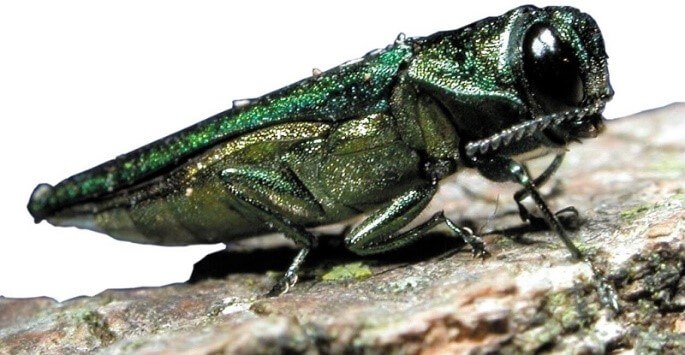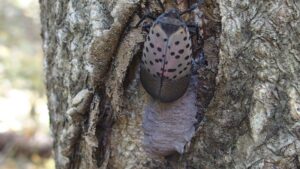Stein Tree Encourages Action during Invasive Species Awareness Week


Many people have heard of the dangers of invasive species. An invasive species is introduced to a region rather than being native and damages the environment or human health. As a result of these invasive species, National Invasive Species Week has emerged to spread invasive species awareness and encourage people to stay vigilant. National Invasive Species Week 2020 is February 24 through February 28. Events take place all week in different locations to help increase awareness of invasive species. Notably this year, a webinar presented by NAISMA (North American Invasive Species Management Association) on the 25th includes the manager of “Don’t Move Firewood,” LeighGreenwood, and she will discuss the possible deregulation of EAB Quarantines.
What are Invasive Species?
While many regions across the globe are facing threats from invasive species, the two species most affecting the plant life in Pennsylvania and Delaware are the emerald ash borer and the spotted lanternfly. The emerald ash borer is native to northeast Asia, was discovered in the U.S. around 2002, and spread to Delaware in 2015. Spotted lanternflies are native to many countries in eastern Asia, were found in the U.S. in 2014, and have spread to Delaware and Pennsylvania since then.
Emerald Ash Borer
As the name suggests, the emerald ash borer feeds on ash trees, which flourish in Pennsylvania and Delaware climates. The females lay eggs in bark crevices, then larvae feed underneath the bark, emerging as adults one or two years later. By consuming the nutrients of the tree, emerald ash borers can damage an ash tree such that the tree can be destroyed within two years.
Spotted Lanternfly
Spotted lanternflies primarily attack ailanthus, or the tree of heaven. The lanternfly leaves oozing, weeping wounds in the trees as the eggs are laid and hatched within the trunk. This species also damages agricultural crops such as grapes, hops, and hardwoods.
How to Spread Invasive Species Awareness
Due to the damage that these species cause, events such as National Invasive Species Awareness Week increase awareness of dangerously destructive creatures, helping us save and preserve our environment. A healthy, flourishing environment provides countless benefits for all those who live within or interact with said environment. Awareness is the critical first step; being aware of the damage these invasive species can cause gives people the impetus needed to take action.
If you discover an emerald ash borer infestation early enough, a professional tree care specialist can save the affected trees and prevent further spread. Stay vigilant and look for signs of emerald ash borer infestation among trees in your area.
Signs of the emerald ash borer include the following:
- D-shaped holes in bark – Created as larvae emerge from under the bark.
- Excessive woodpecker activity – Woodpeckers feed on the EAB larvae.
- Galleries under the bark – Formed as the emerald ash borer larvae move and eat under the bark surface.
- Epicormic Sprouting – This symptom is an indication of some sickness or infestation.
- Crown Thinning– The emerald ash borer feeds on the canopy, and over time, disrupts the nutrients and water supply to the top of the tree.
Spotted lanternflies typically reside near the trunk of a tree, and may be more challenging to identify. When the wings are closed, spotted lanternflies have a greyish color that blends with the bark. If the wings are spread, a vibrant red color can be seen just below the wings.
Another method to help alleviate the invasive species problem is to stop moving firewood from one area to another. Firewood can transport invasive species, so campers going on trips should ideally buy or gather firewood at or near the campsite. If you want to make sure your trees are safe from these invasive species, spring is an excellent time to schedule an inspection to ensure your trees are healthy.
Contact Stein Tree Service for Pest Management and Tree Care Services
Stein Tree Service is the oldest independently owned plant and tree care services company in Delaware. Our licensed and experienced arborists and tree care specialists can inspect and treat invasive species in Delaware and Pennsylvania. Our equipment is state-of-the-art, and have helped spread invasive species awareness and overall tree and plant health care to our communities for decades. For a free consultation, contact us at (302) 478-3511 today.
CALL US
610.723.8072
Serving DE and PA
REQUEST A FREE, NO OBLIGATION CONSULTATION
FEATURED PROGRAMS
Stein Tree Earns Permit to Work in Spotted Lanternfly Quarantine Areas
Stein has a permit to work in spotted lanternfly quarantine areas in Pennsylvania and Delaware. Tree Service Companies have to be trained in proper moving and disposal of materials to avoid spread of the spotted lanternfly and Stein has completed the training courses. Learn more.
Emerald Ash Borer Inspection
In the spring, destructive emerald ash bore![]() r (EAB) adult beetles begin to emerge. These invasive pests can destroy your ash trees. Our specialists are certified to treat for EAB in Pennsylvania and Delaware. For a free consultation, contact us today.
r (EAB) adult beetles begin to emerge. These invasive pests can destroy your ash trees. Our specialists are certified to treat for EAB in Pennsylvania and Delaware. For a free consultation, contact us today.

